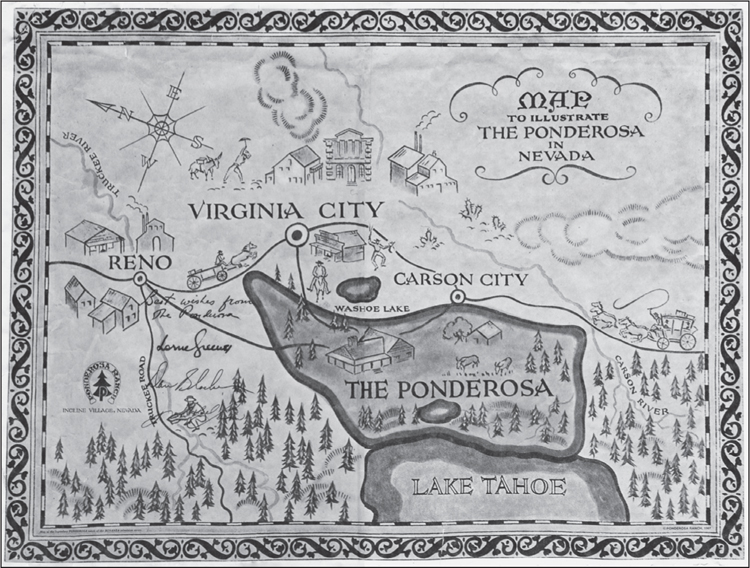Two
SERIALS AND B WESTERNS
In the northern part of the Alabama Hills, there are two areas to explore: the northwest unnamed rocks near roads off Movie Road and the named northern rocks area northeast of Movie Road. These are the easiest movie locations to find, and rewarding once discovered.
The northwest area is where one can see the Gunga Din (1939) suspension bridge, which still has the concrete construction that once supported an elephant. Also in the northwest area are locations of various film stunts, a movie burial site, and locations of films including Maverick, with James Garner and Mel Gibson.
In the northeast area are the more notable sites of the B Westerns and serials. The locations are identified best by the rock formations that are easily spotted. This area has a dominant gravel path that can be easily walked while exploring various filming locations. Find the Lone Ranger Canyon, where a concert is held every June by organizers in Lone Pine.
Lone Ranger Canyon is where the Lone Ranger is ambushed and becomes a legend. A scene from Quentin Tarantino’s 2012 film Django Unchained was filmed in the canyon. The film used props from early Western films, including The Lone Ranger. Walk a few feet up the gravel path eastward and one will discover the site where the first Republic Picture, Westward Ho, starring John Wayne, was filmed.
Ambush Rock, or “Hoppy Rocks,” is located further along the path. It is named after Hopalong Cassidy, who evades the bad guys in the movie Silent Conflict. Gene Autry Rock, named for the famous B Western singing cowboy, is also near here, and can be seen in Boots and Saddles (1937), which he starred in. Continue up the path to the top and turn right to find Gary Cooper Rock. This landmark is prominent in Cooper’s 1935 classic, The Lives of a Bengal Lancer.
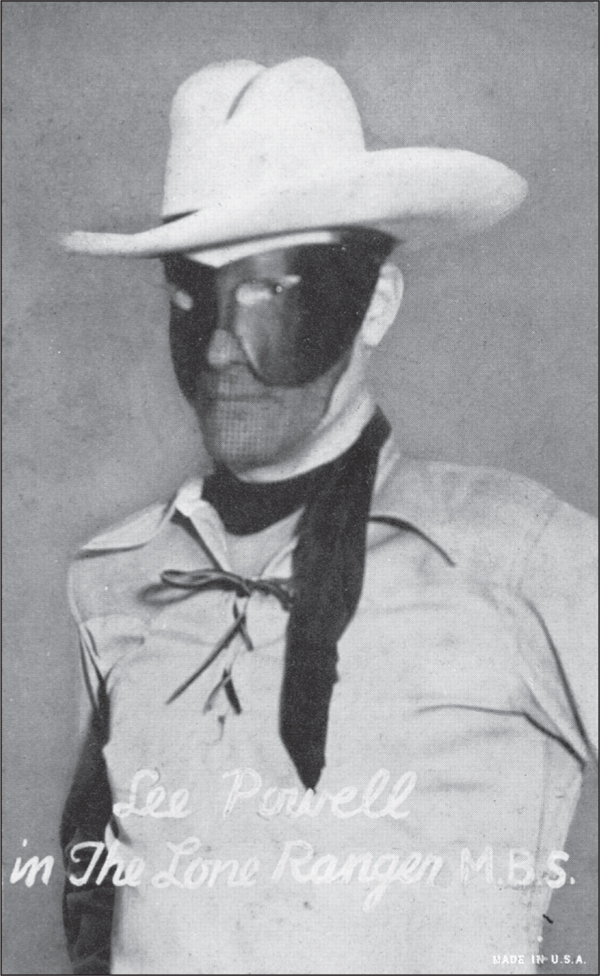
Lee Powell starred in the first Lone Ranger serial, directed by William Witney, in 1936. Lone Ranger Canyon, also known as “Ambush Canyon,” remains one of the most visited filming locations in the Alabama Hills. Lee Powell served in World War II as a US Marine. He passed away in 1943 from drinking moonshine in the Pacific and is buried on the island of Saipan.
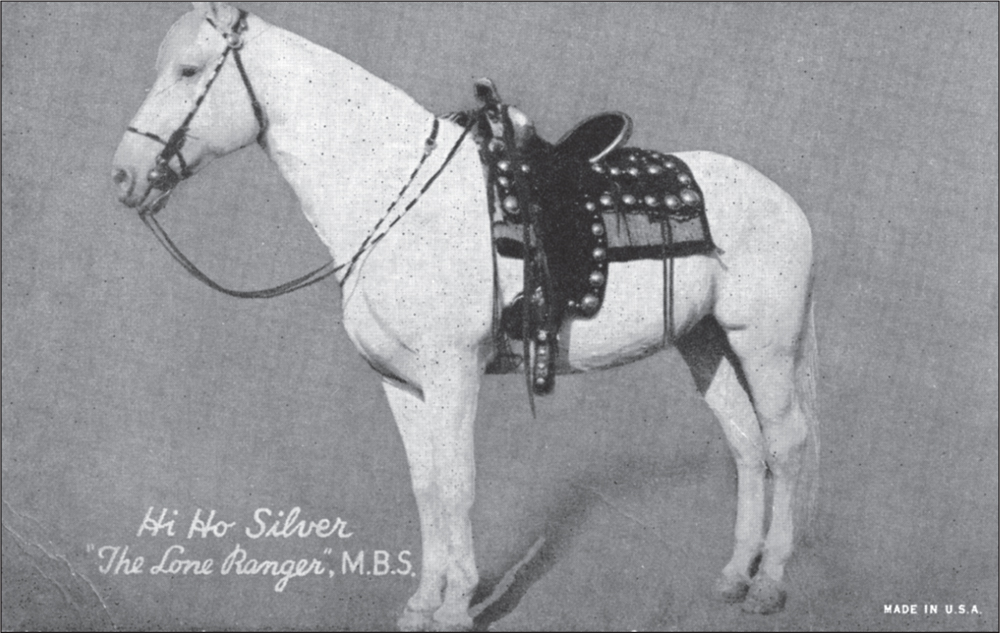
Here is a rare photograph of the first horse named Silver that the Lone Ranger rode. The Lone Ranger’s sidekick was Tonto, his trusted friend who rode a horse named Scout. It is said that Silver still rides today when the William Tell Overture is played by an orchestra. Tonto’s horse, Scout, is buried at the Los Angeles Pet Cemetery in California.
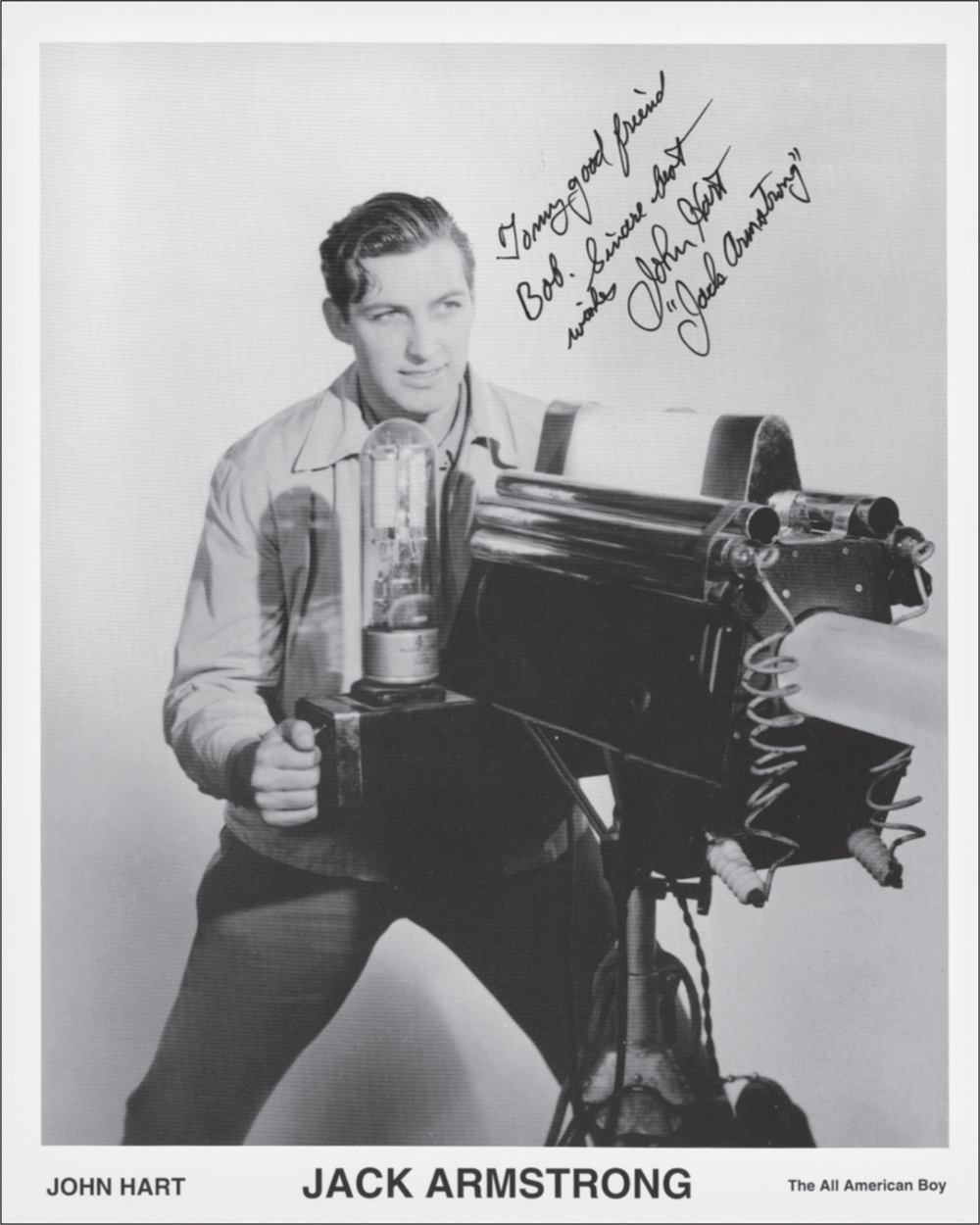
John Hart, shown here, also starred as the Lone Ranger, replacing Clayton Moore for two seasons. However, Hart is best remembered as the titular character in Jack Armstrong, the All American Boy, a famous serial of the time. Hart appeared as Hawkeye in the 1957 television series Hawkeye and the Last of the Mohicans and played Captain Africa in Adventures of Captain Africa (1955). His last role was as a news writer in The Legend of the Lone Ranger (1981).
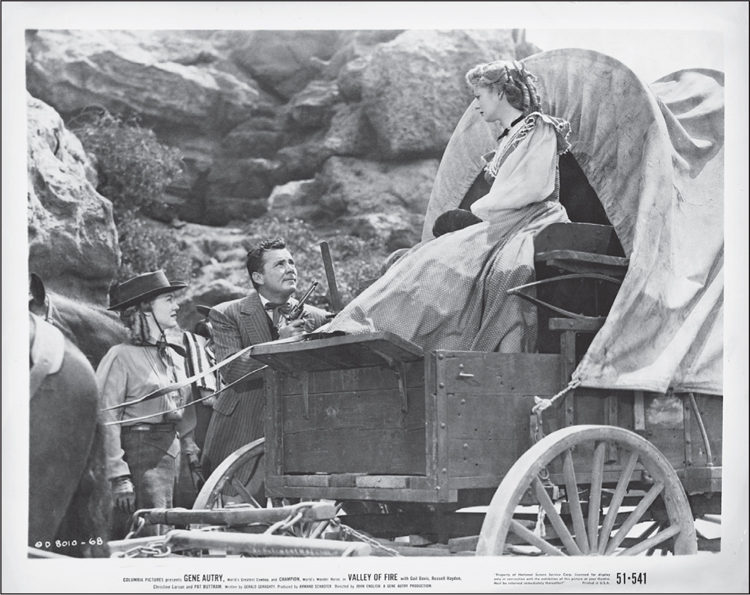
Shown here is Gail Davis in The Valley of Fire, produced by Gene Autry. Davis is best known for her work as Annie Oakley, a cowgirl who saved the West with a horse named Target. She starred alongside Roy Rogers, Gene Autry, and many other B Western legends.
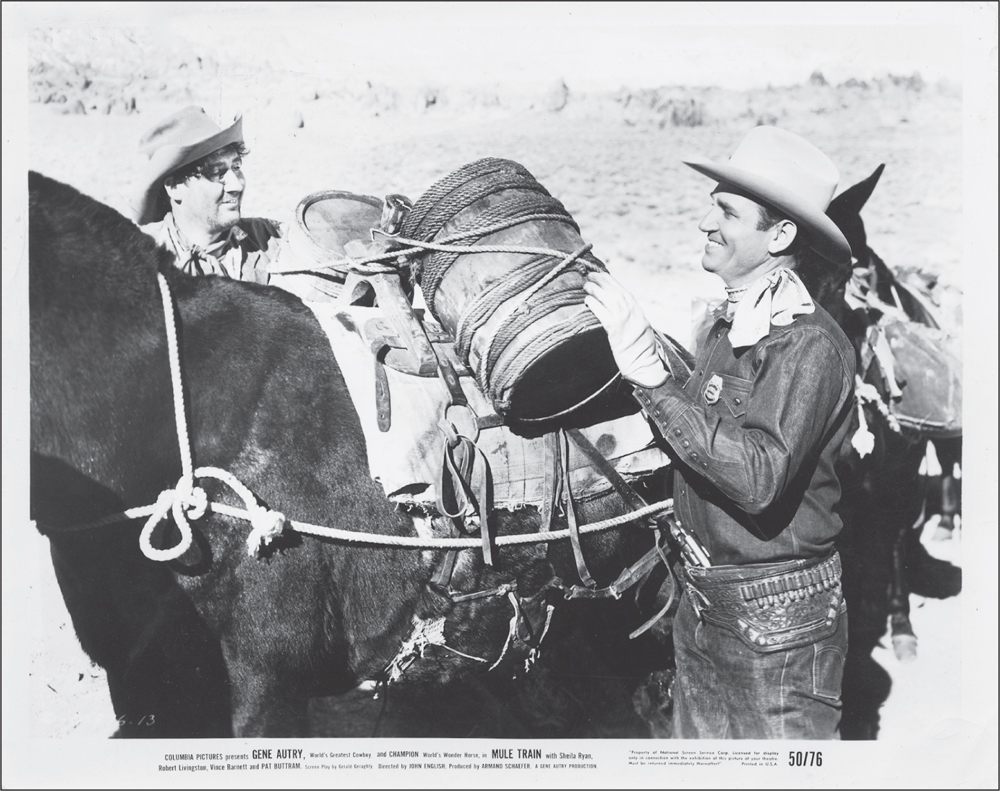
Here is a photograph of Gene Autry in Mule Train (1950) with the Alabama Hills in the background. There is still evidence of sets left behind by movie crews in the Alabama Hills. In the northern section around the bend on Movie Road, visitors can still see the watering hole from this film.
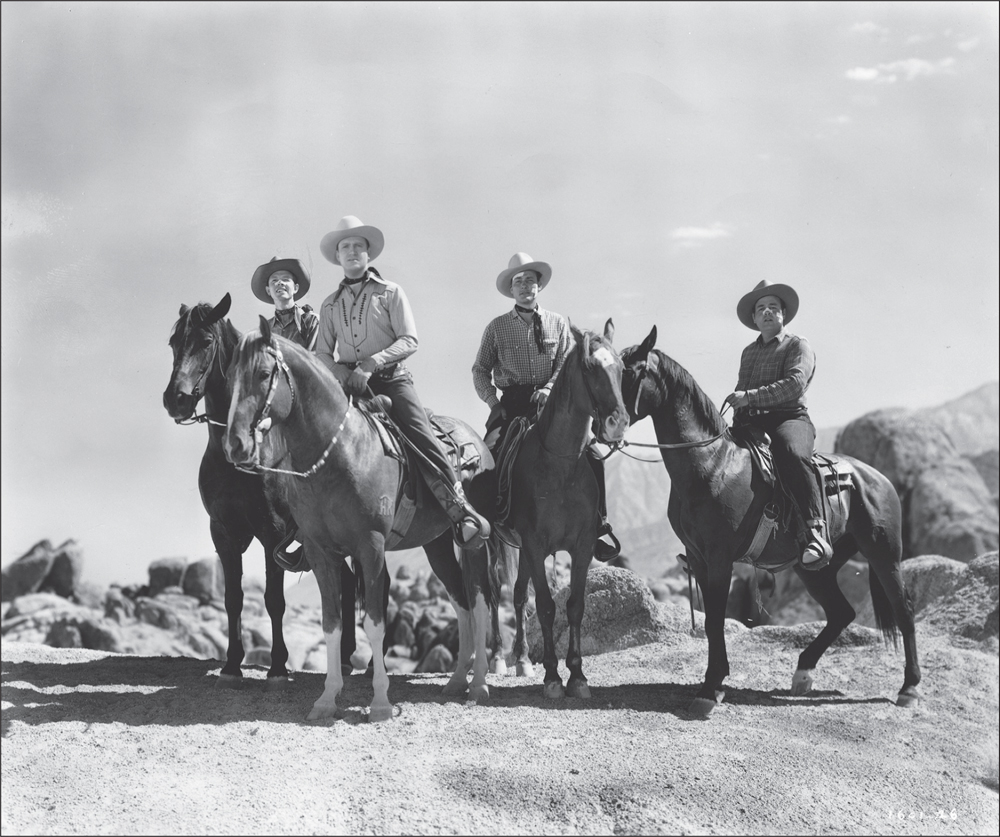
Gene Autry (second from left) is pictured with his horse Champion and the Cass County Boys in Trail to San Antone (1947), a Republic picture. Gene Autry has five separate stars on the famous Hollywood Walk of Fame on Hollywood Boulevard because of his many contributions to the entertainment industry. Champion is buried on the grounds of Melody Ranch Motion Picture Studio. Autry, the iconic Western hero, received top billing in at least 18 movies filmed in the Alabama Hills: Barbed Wire (1952), Beyond the Purple Hills (1950), The Blazing Sun (1950), Boots and Saddles (1937), Call of the Canyon (1942), Comin’ ’Round the Mountain (1936), Cow Town (1950), Down Mexico Way (1941), Goldtown Ghost Riders (1953), In Old Monterey (1939), Loaded Pistols (1949), Melody Ranch (1940), Mule Train (1950), Oh, Susanna! (1936), The Old Barn Dance (1938), Rootin’ Tootin’ Rhythm (1937), Trail to San Antone, and Valley of Fire (1951).
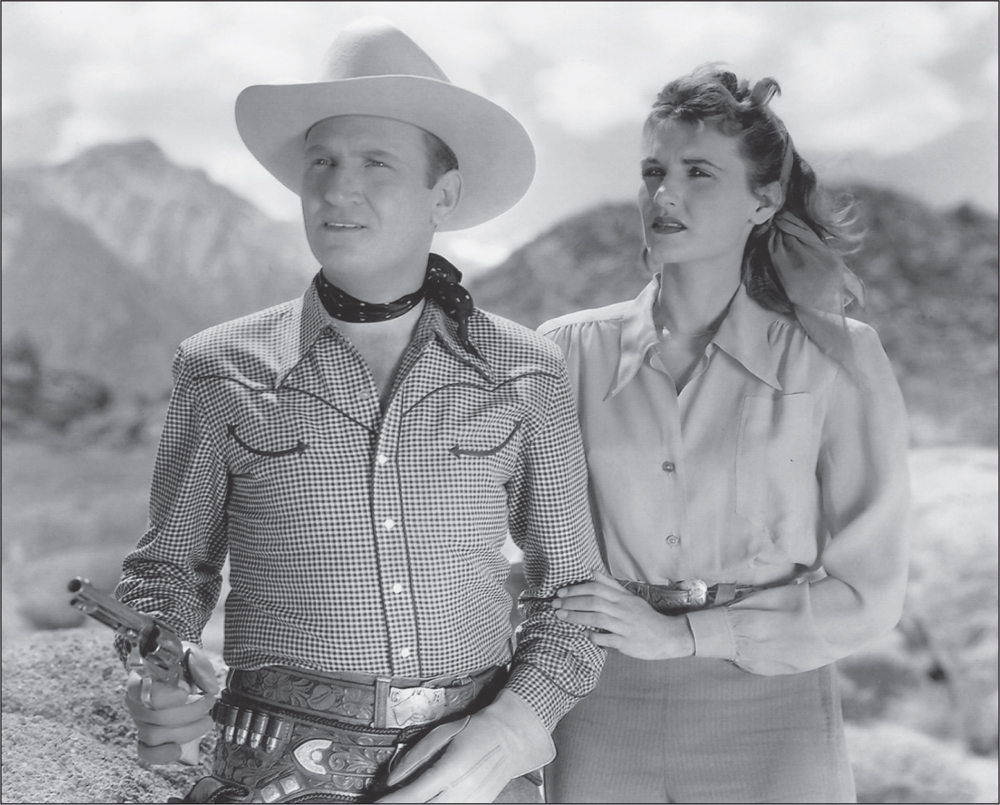
Here is a wonderful photograph of Gene Autry and Peggy Stewart, with Lone Pine Peak in the background. Autry had a rock in the hills named after him that can be seen in another film, Boots and Saddles (1937). Stewart, known as the queen of the B Westerns, is credited with working on many productions in a short amount of time—including no less than 27 films from 1945 through 1947.
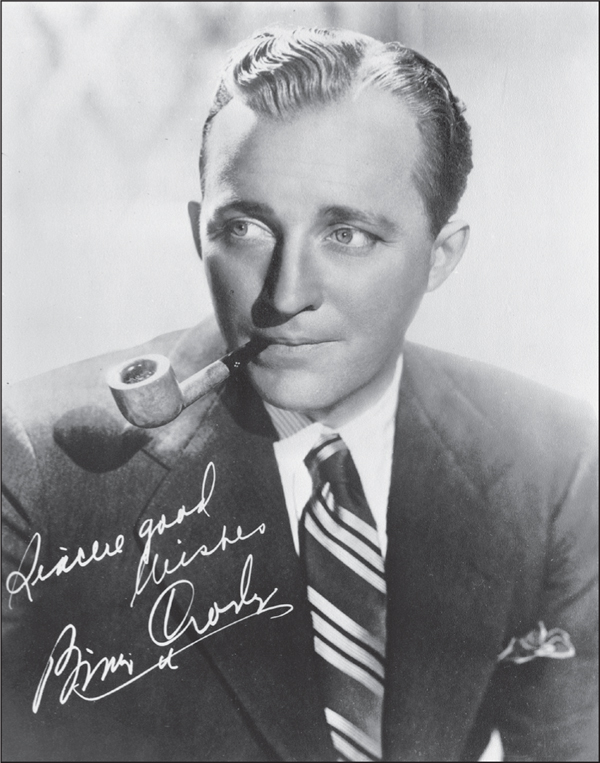
Bing Crosby was involved in Rhythm on the Range (1936), in which he sings the famous song “I’m an Old Cowhand,” written by Johnny Mercer. Crosby is remembered as a brilliant and dedicated singer.
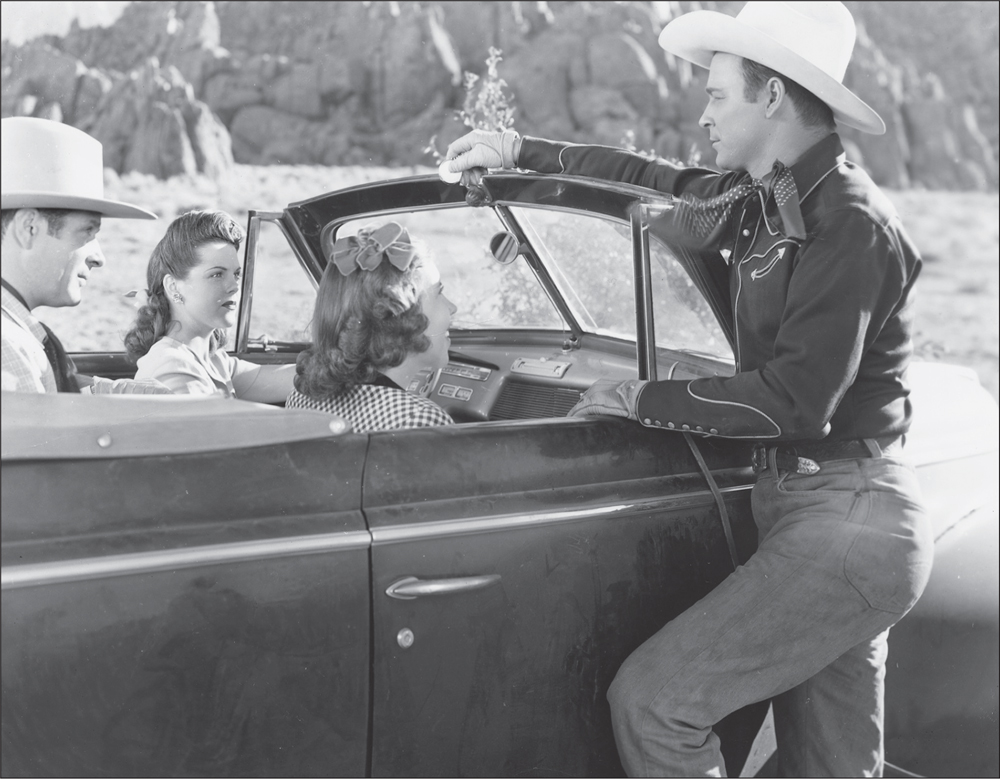
Roy Rogers is seen in this great photograph from Hands Across the Border (1944). This scene was filmed in the Alabama Hills. Like Autry, Rogers played many leading roles in productions filmed the Alabama Hills: Hands Across the Border, Man from Music Mountain (1943), Saga of Death Valley (1939), Song of Texas (1943), Under Western Stars (1938), and Utah (1945).
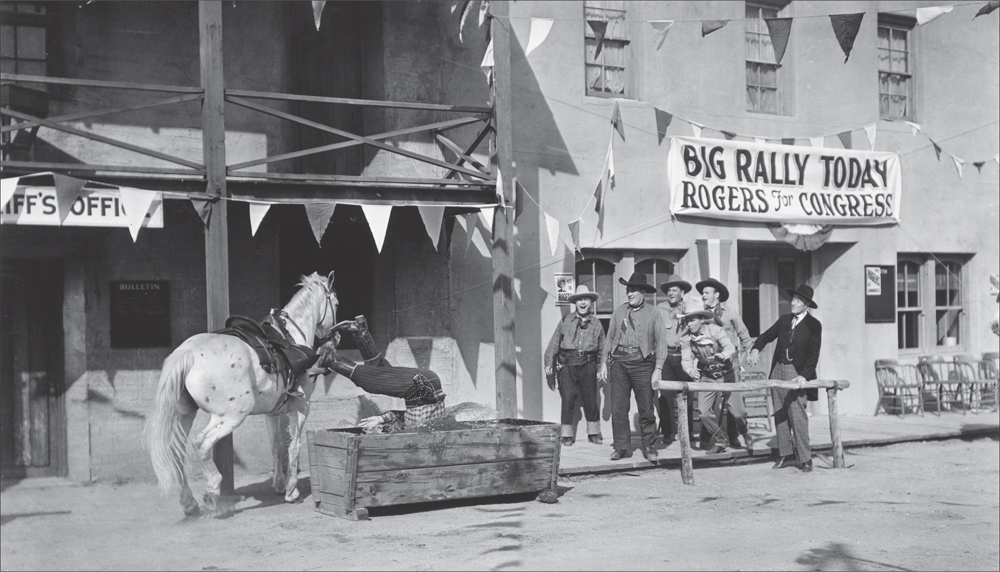
Here is a still action shot from Under Western Stars (1938), starring Roy Rogers. In it, Roy plays himself campaigning for a seat in the US Congress, hoping to draw the government’s attention to the plight of farmers in the Dust Bowl of the 1930s. Note the banner. This scene was probably filmed in the nearby town of Independence, California. Roy Rogers dedicated the historical plaque on Movie Road in the Alabama Hills.
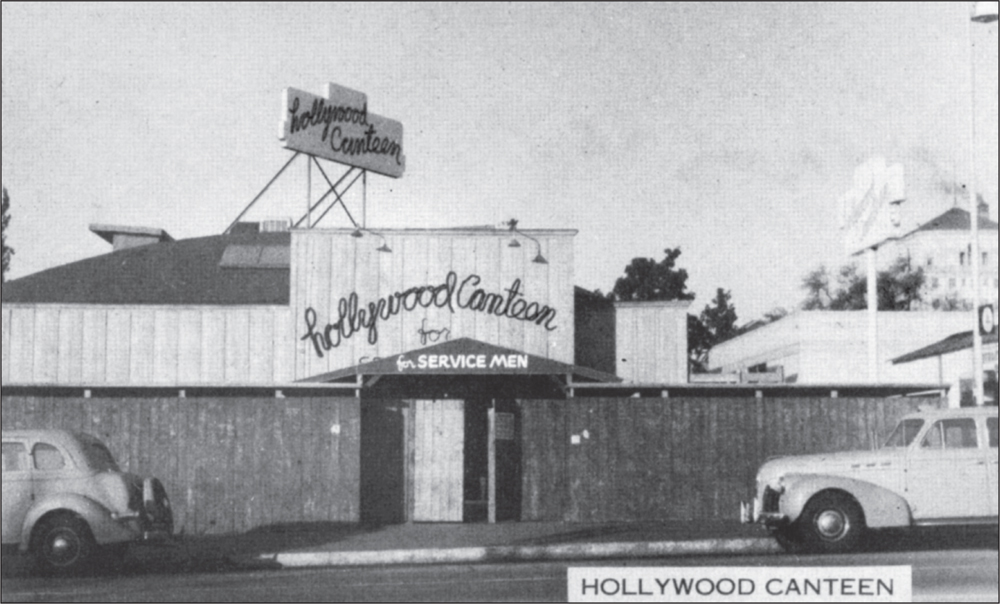
Roy would make appearances, along with his horse Trigger and dog Bullet, at the famous Hollywood Canteen for the troops during World War II. This was during his later days at Knott’s Berry Farm in Buena Park, California. Bullet and Trigger are preserved via taxidermy and were stuffed and mounted on display for years at a now defunct museum; they were purchased for $265,500 by a Nebraska television network in 2010.
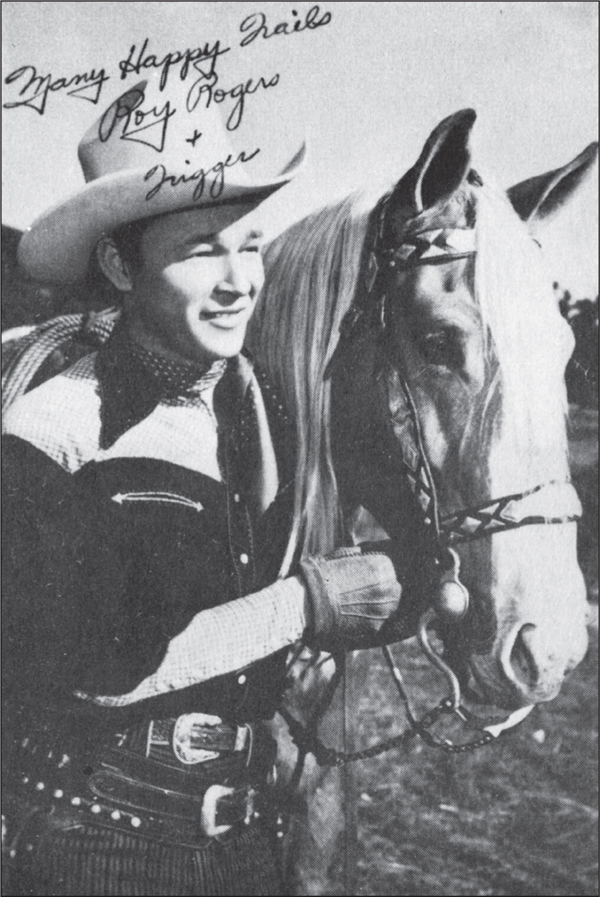
Roy Rogers was known as “King of the Cowboys.” Dale Evans, his wife, was also a successful entertainer and Western star and was known as “Queen of the West.” Her horse was named Buttercup. Roy and Dale are buried together at Sunset Hills Cemetery in Apple Valley, California.
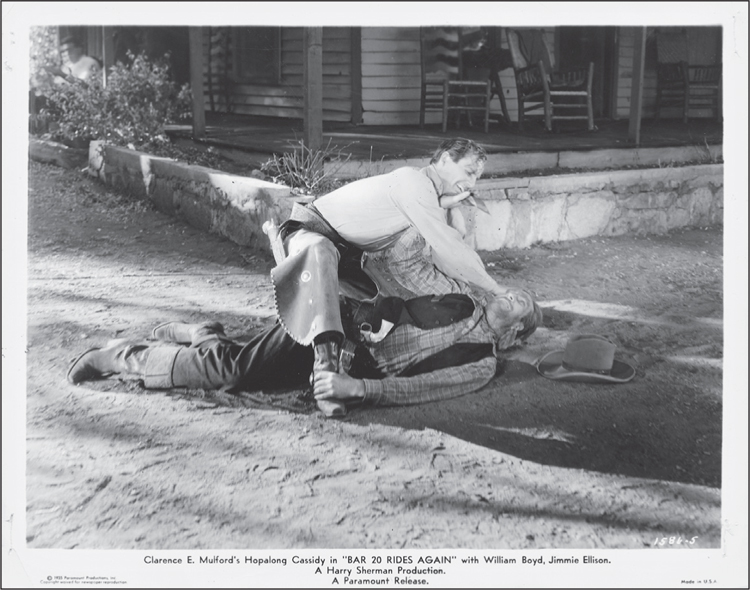
This photograph shows an action scene in Bar 20 Rides Again (1935). The location is a cabin positioned along Tuttle Creek Road in the Alabama Hills. This was also the residence of actor William Boyd, who played Hopalong Cassidy in the famous serial. He also lived at 2010 Vine Street in Hollywood, not far from the famous intersection with Hollywood Boulevard. Later in life, Boyd lived in Palm Desert, California.
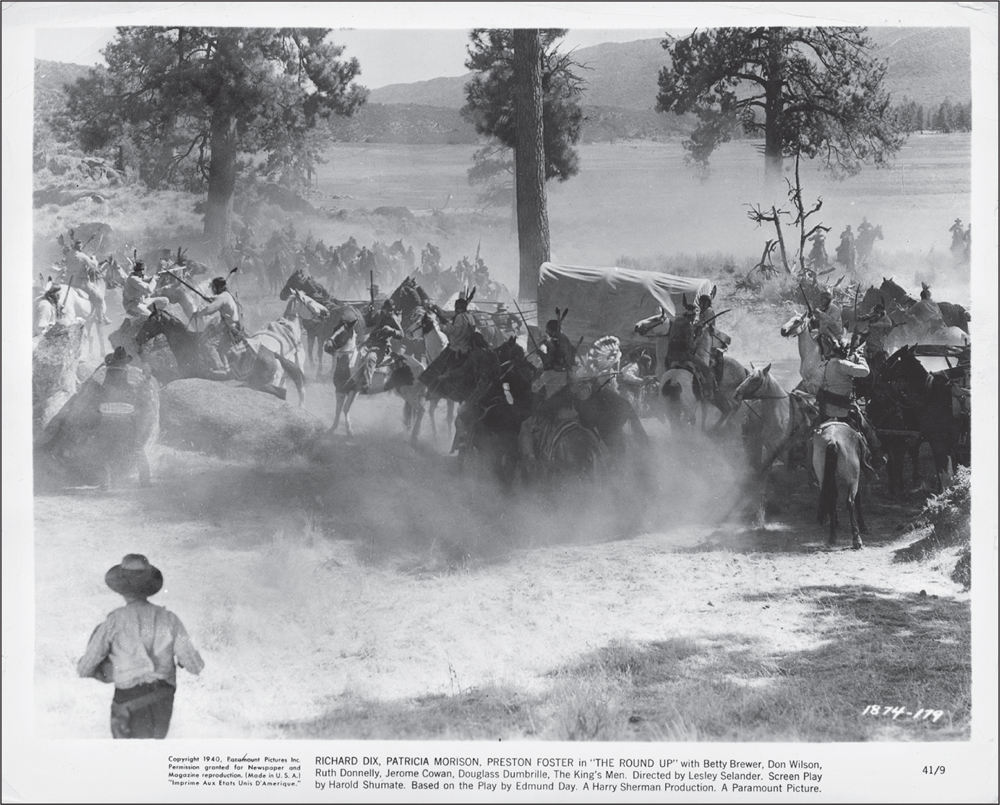
This photograph shows a battle scene from the 1940 remake of the 1920 film The Round Up. It was filmed in Lone Pine and Rock Creek Lake near Tom’s Place, California. Richard Dix and Preston Foster made the trip to work in the Alabama Hills, as did producer Harry Sherman, who worked on over 50 episodes of the Hopalong Cassidy serial.
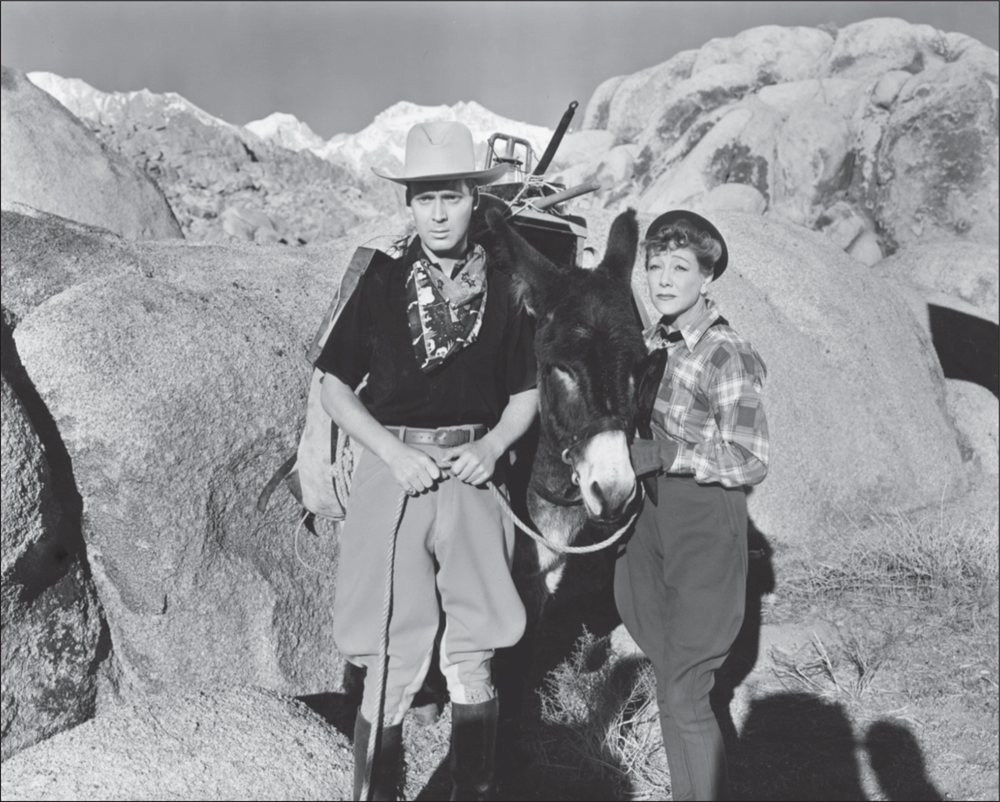
This is a photograph from Dudes are Pretty People (1943), starring Jimmy Rogers and Marjorie Woodworth. B Westerns such as these were the bread and butter of movie houses during the 1940s. This one was a Hal Roach Studio film from the creators of Our Gang (better known as The Little Rascals). At 43 minutes, it was the first of the studio’s many so-called Western “streamliners,” films that were longer than “shorts” but shorter than full-length features. The unmistakable terrain of the Alabama Hills provides a nice background.
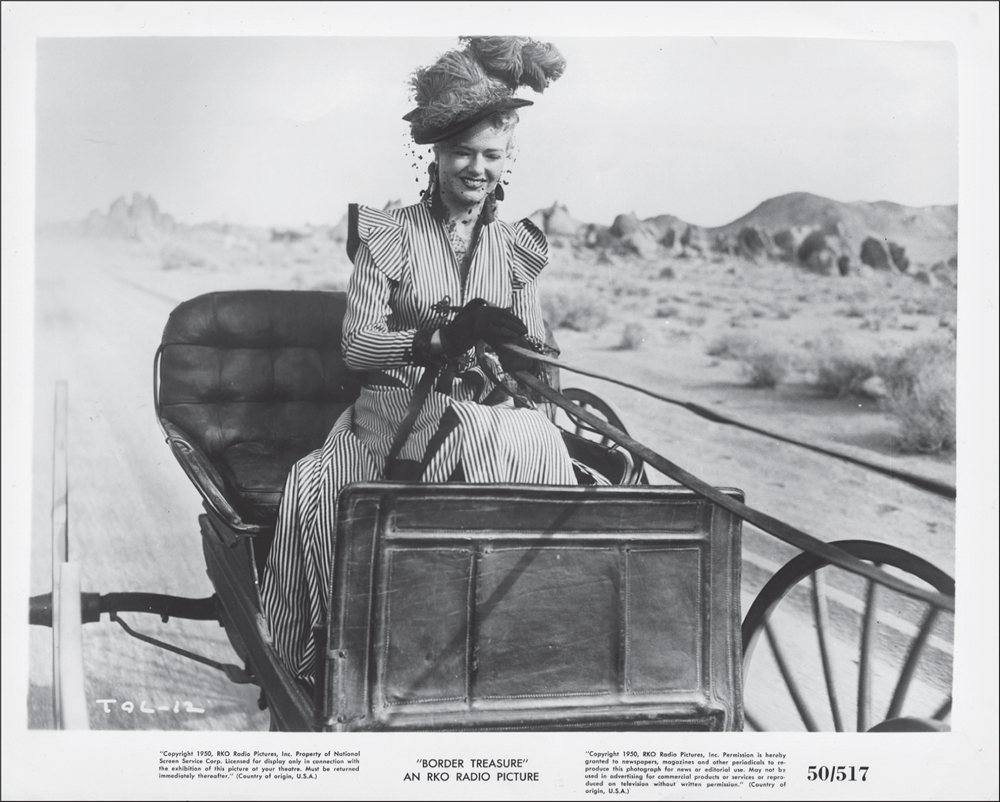
Jane Nigh, a redhead like Lucille Ball, was seen in many B Westerns and was a civilian defense worker during World War II. She starred in films for Monogram Pictures and 20th Century Fox, and this image shows her in the RKO Radio Picture Border Treasure (1950). This photograph shows her driving a wagon along Movie Road in the Alabama Hills.
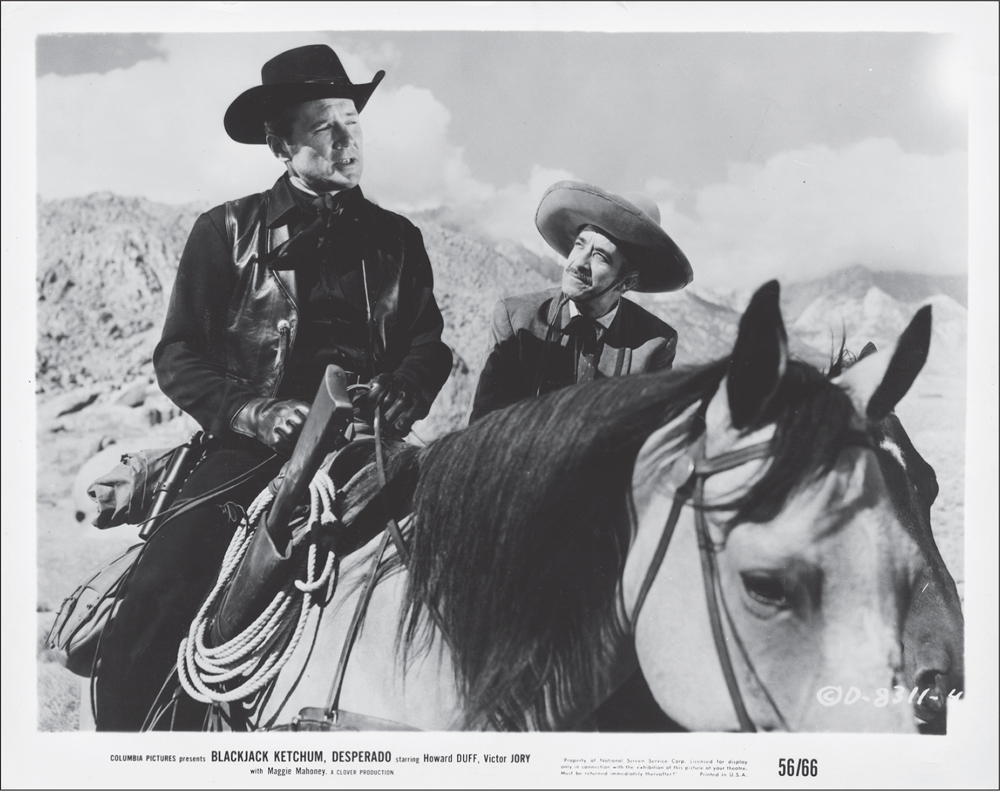
Howard Duff is seen riding in the Alabama Hills in Blackjack Ketchum, Desperado (1956). This film was from a novel written by Louis L’Amour. Howard Duff was married to Ida Lupino, who starred in High Sierra (1941); together, they were a power couple of the Hollywood elite during the 1950s.
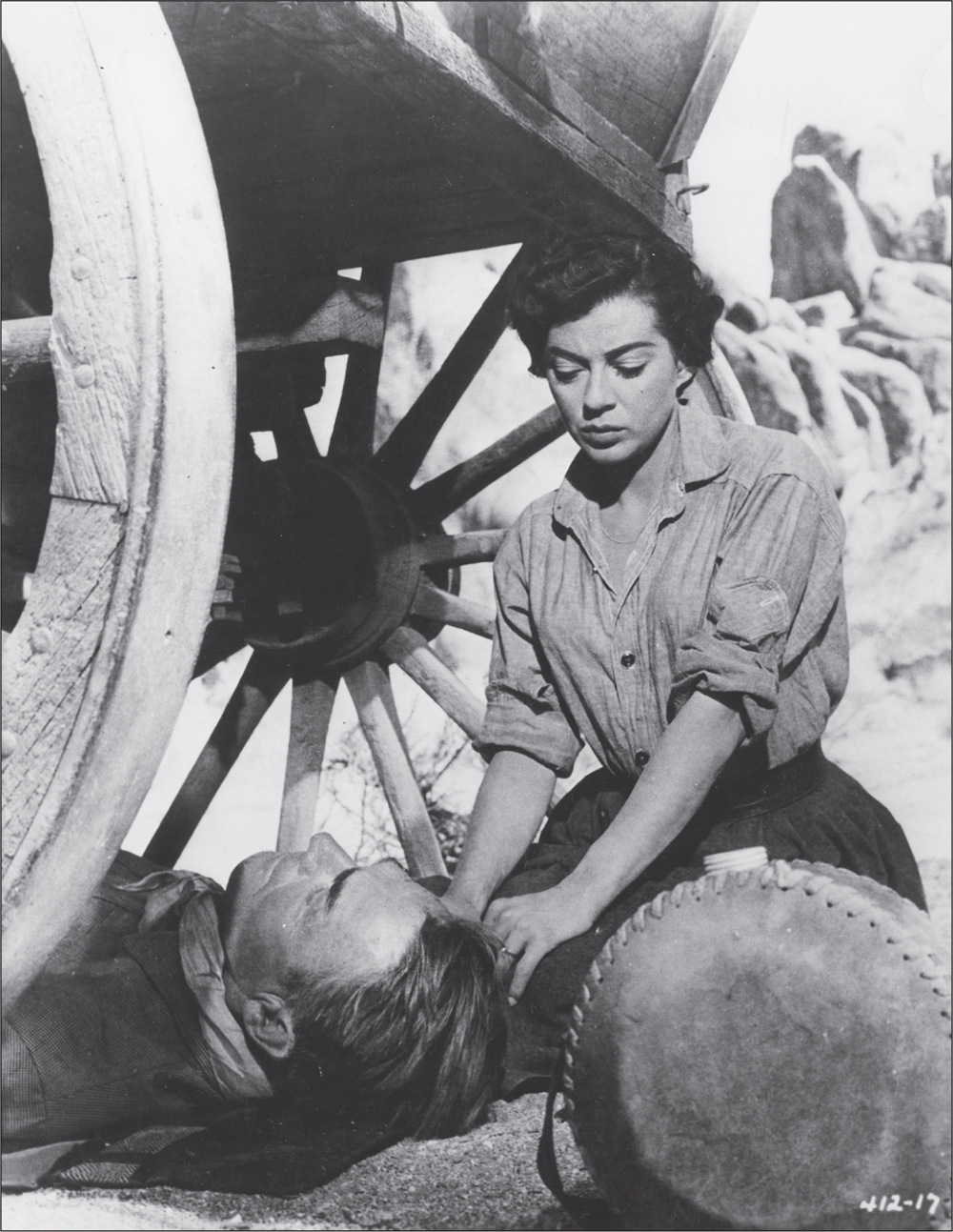
Gail Russell and Randolph Scott starred in Seven Men from Now (1956), which is regarded as one of the best motion pictures ever filmed in the Alabama Hills. Scott was a favorite among locals as well as his peers, and he loved riding in the Alabama Hills. He had a horse named Stardust, which he gave to a local rancher in Lone Pine.
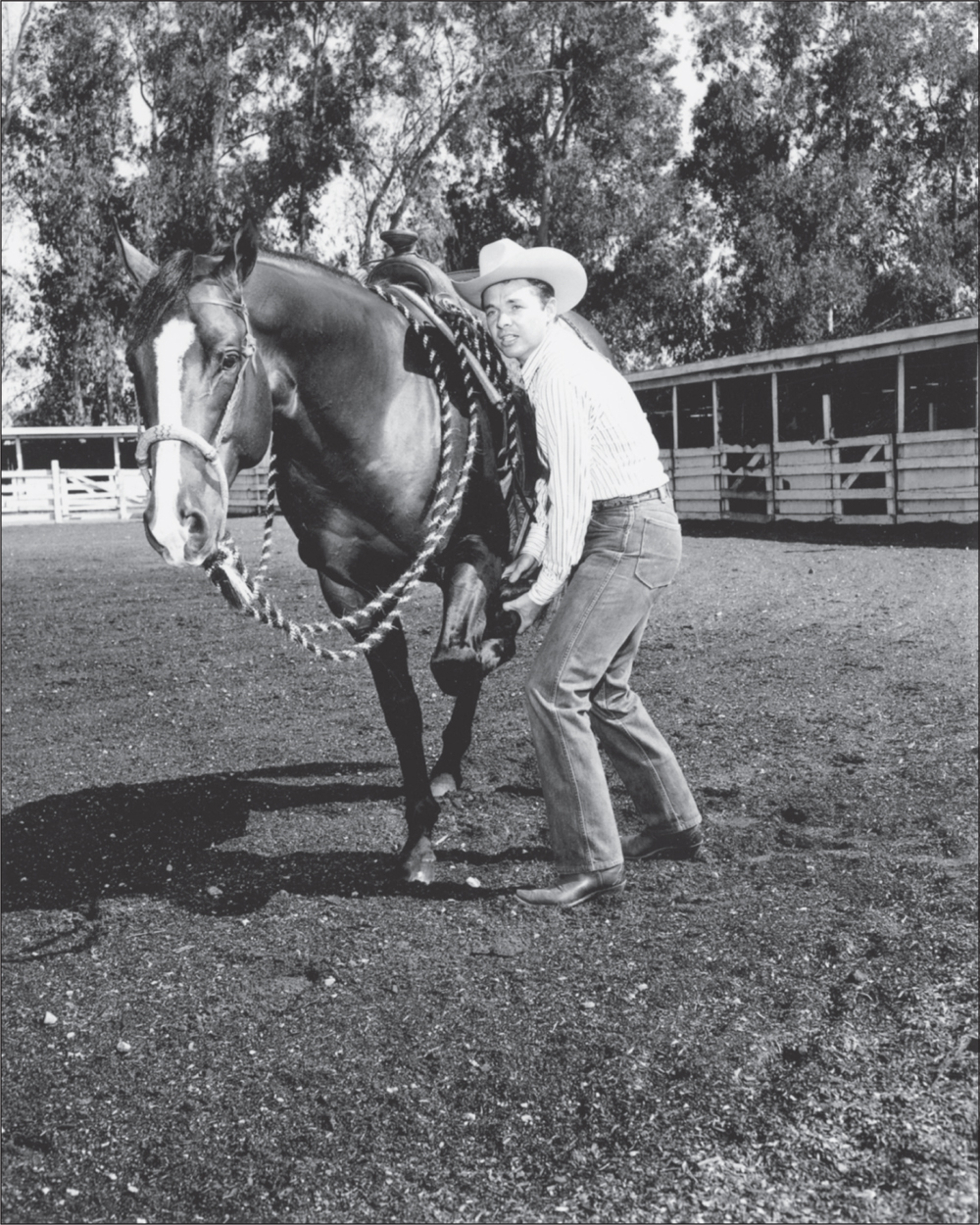
The most decorated soldier of World War II and last of the famous B Western stars was Audie Murphy, shown here getting ready to ride. He made over 40 movies, mostly Westerns. Films like Hell Bent For Leather (1960) and Showdown (1963) are among the most popular of him riding in the Alabama Hills. Murphy died at the age of 42 in a plane crash on May 28, 1971. He is buried near the Tomb of the Unknown Soldier in Arlington National Cemetery.
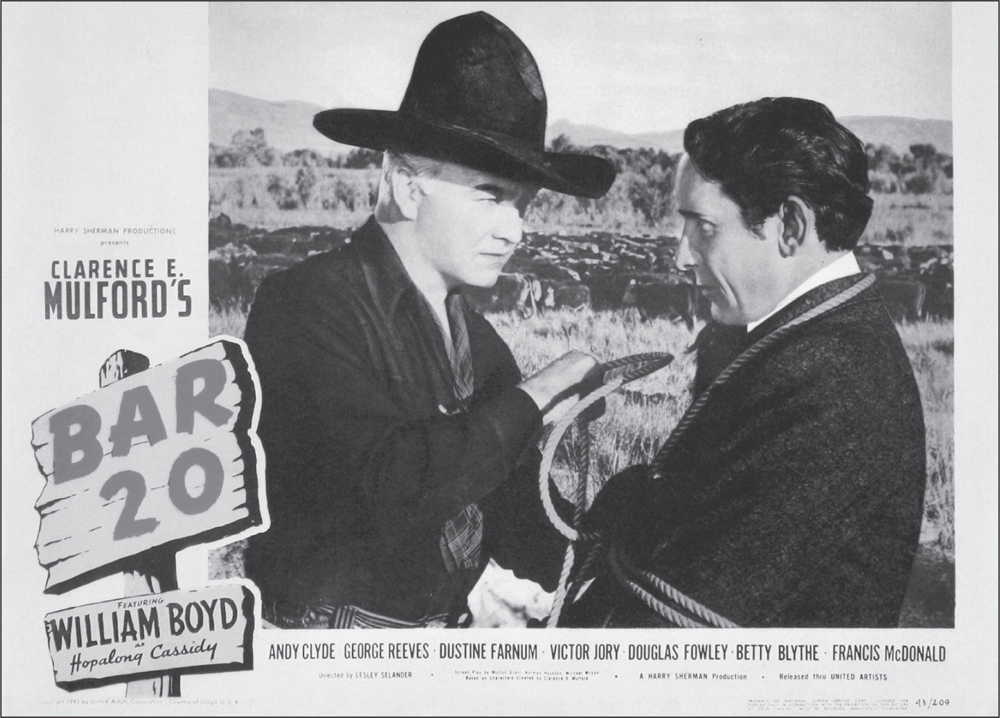
Pictured above is the lobby card for Bar 20 (1943), which is widely considered one of the best in the Hopalong Cassidy serials. Below is the lobby card for Hands Across the Border (1944), the film in which Trigger is introduced for the first time.
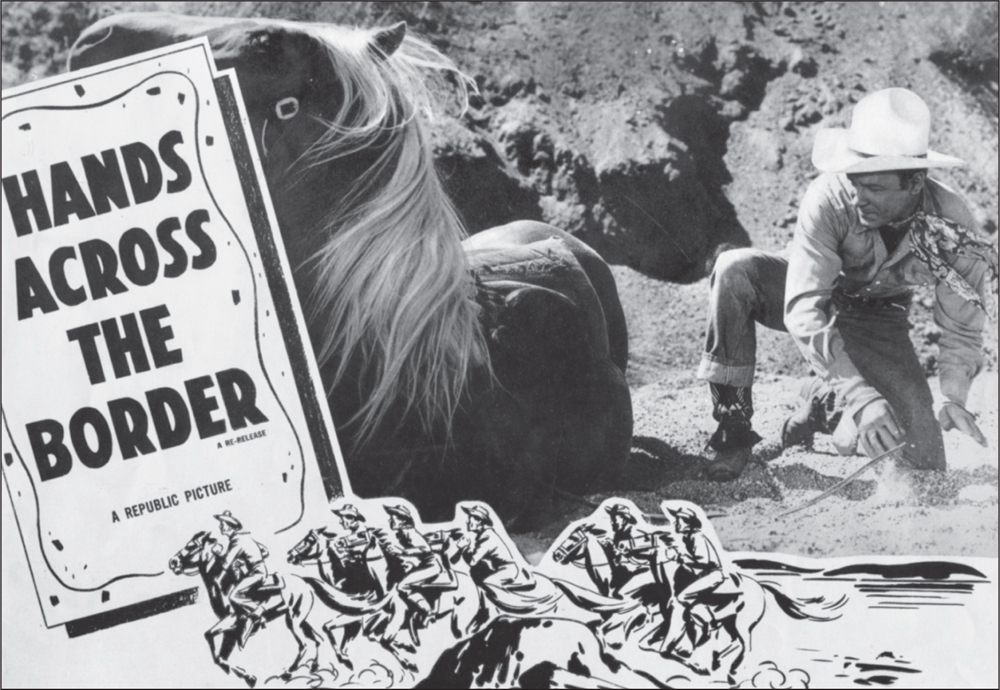
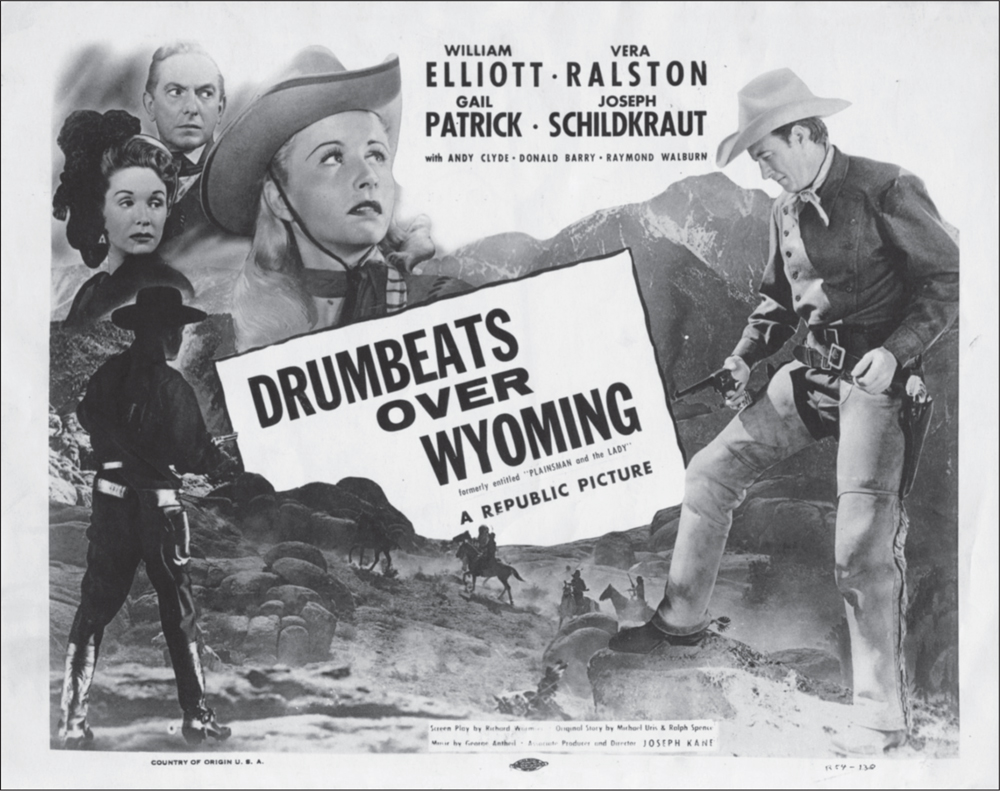
Above is the lobby card Drumbeats Over Wyoming (1946). The Western star Bill Elliott (far right) was famous for having his pistols inverted on his holster, as seen here. The lead role was turned down by John Wayne before being offered to Elliot, who was best known for starring in several episodes of the Red Ryder series, also filmed in the Alabama Hills.
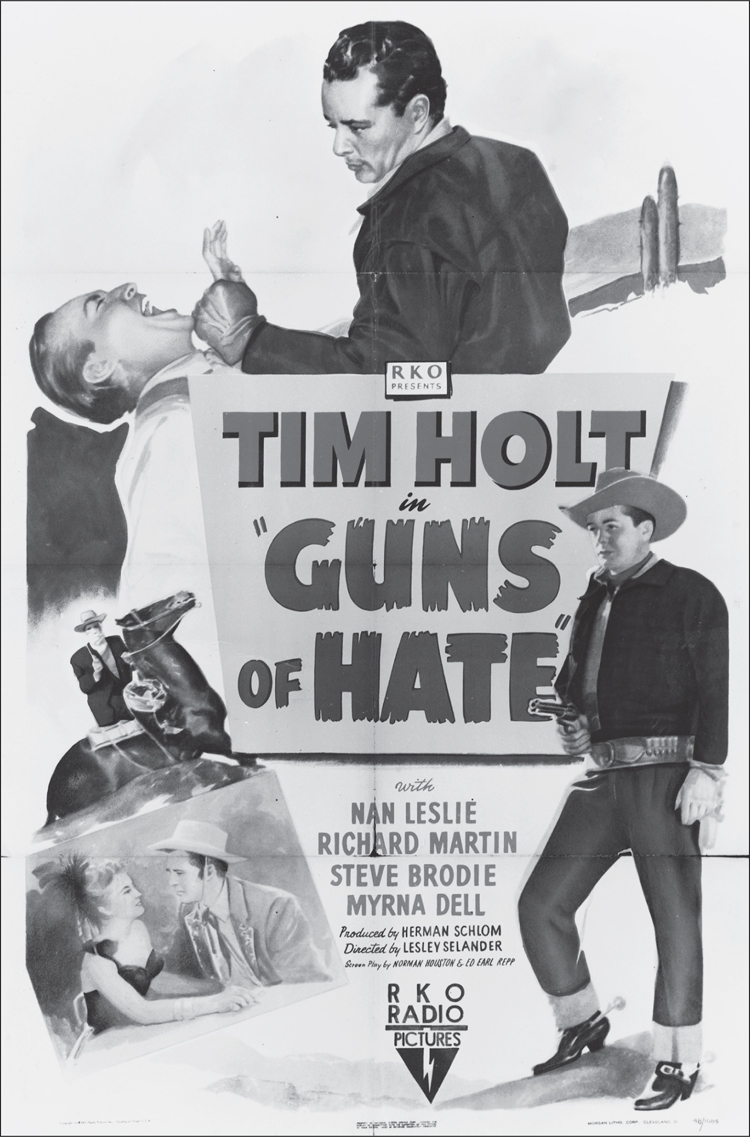
This is the lobby card for Guns of Hate (1948), which was filmed entirely in the Alabama Hills. Directed by Lesley Selander and starring Tim Holt, the film tells the story of two men falsely accused of murder who escape from jail and search for the real killers. Tim Holt’s horse was named Duke.
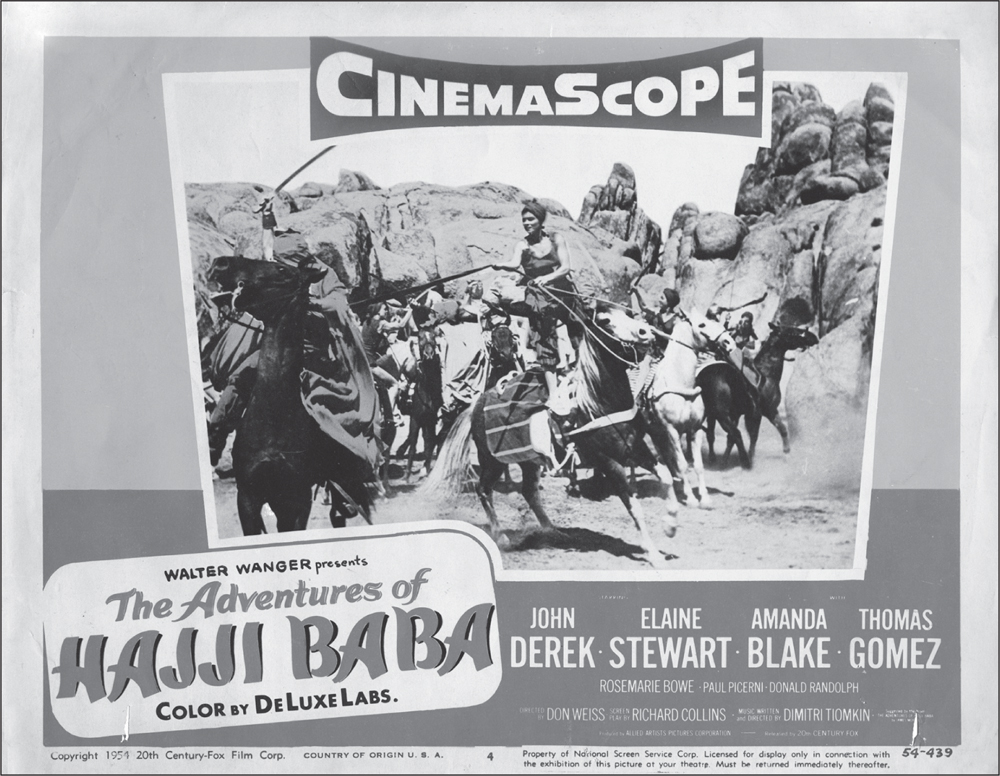
This lobby card is for The Adventures of Hajji Baba (1954). This film included many wonderful scenes showing locations in the Alabama Hills. Below is the lobby card for The Violent Men (1955). The film, starring Glenn Ford, centers around the Anchor Ranch, which is also the name of a real ranch located in Lone Pine. It also starred veteran actors Barbara Stanwyck and Edward G. Robinson. It became a magical place for Stanwyck, as her ashes were scattered in the winds of the Alabama Hills, her final resting place.
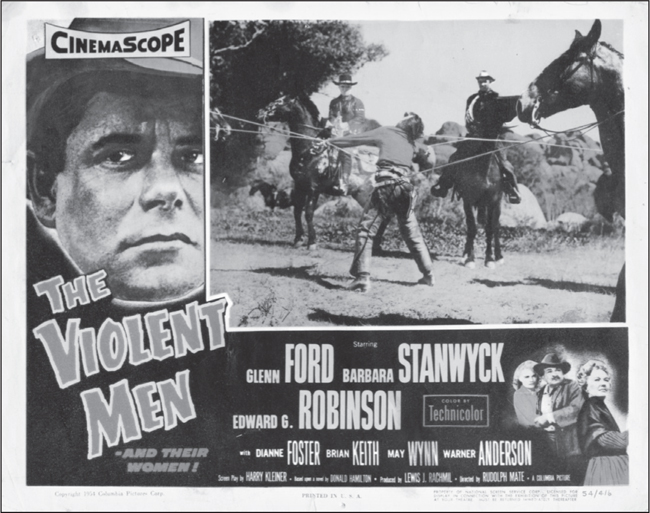
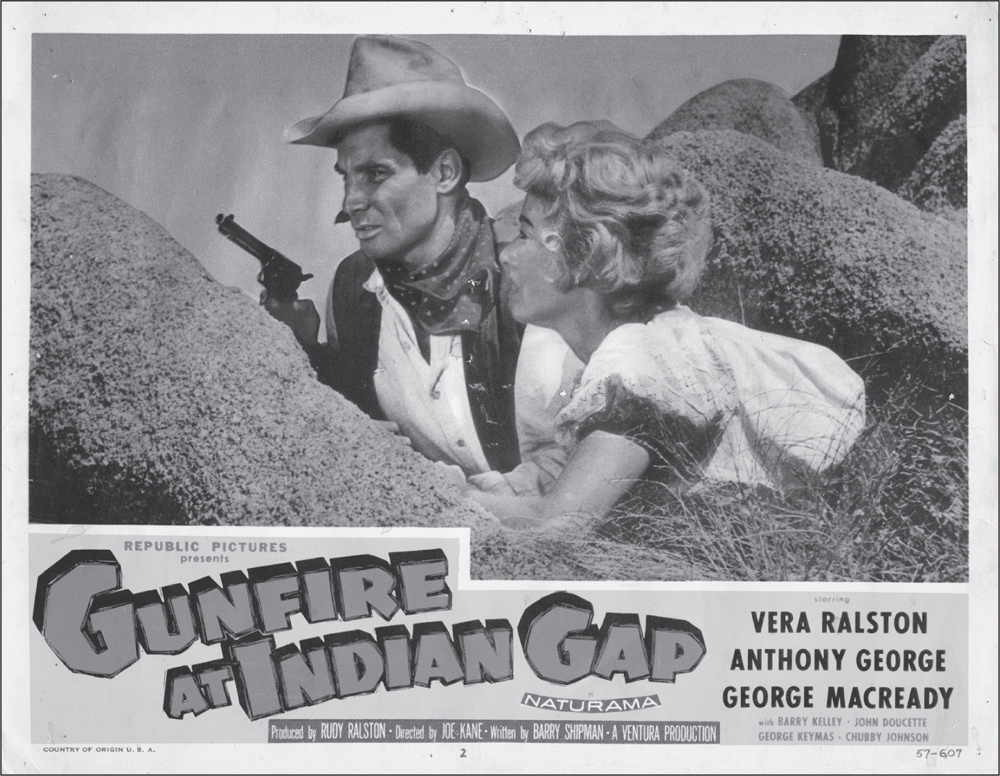
Pictured above is the lobby card for Gunfire at Indian Gap (1957), starring Vera Ralston in a classic Republic Western. Ralston was a Czech figure skater, actress, and wife of Republic Pictures founder and president Herbert J. Yates. Below is the lobby card for From Hell to Texas (1958). The film starred Don Murray (who costarred with Marilyn Monroe in 1956’s Bus Stop), Dennis Hopper, and Chill Wills. The card shows the rocks of the Alabama Hills.
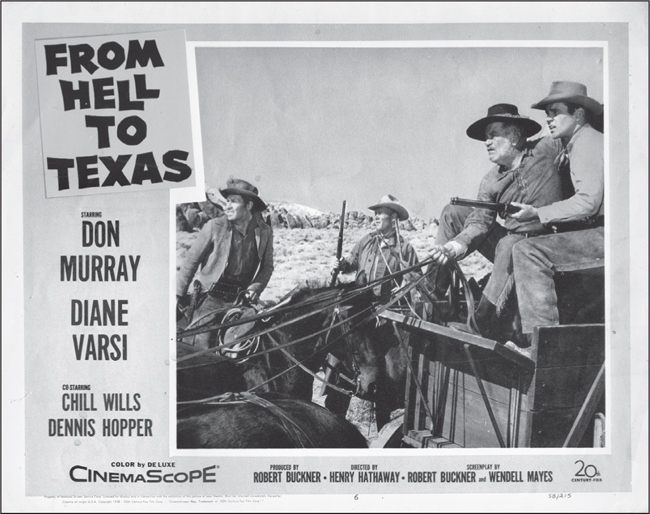
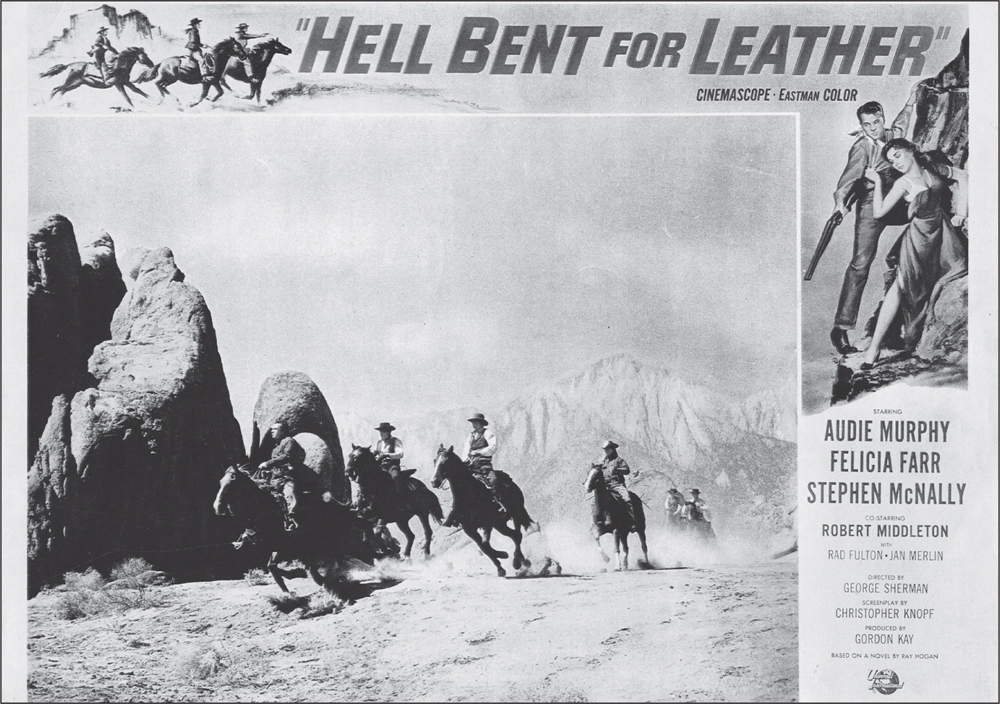
Above is the lobby card for Hell Bent for Leather (1960), starring Audie Murphy and Felicia Farr and featuring wonderful locations in the Alabama Hills. Below is a map is of the Ponderosa Ranch, from the television show Bonanza. The opening of each episode showed this map on fire as a catchy tune played the background. Bonanza episodes were filmed in the Alabama Hills. In the modern film Django Unchained (2012), also filmed partly in the Alabama Hills, actor Jamie Foxx is said to be wearing a vest and hat worn by Michael Landon in a Bonanza episode.
